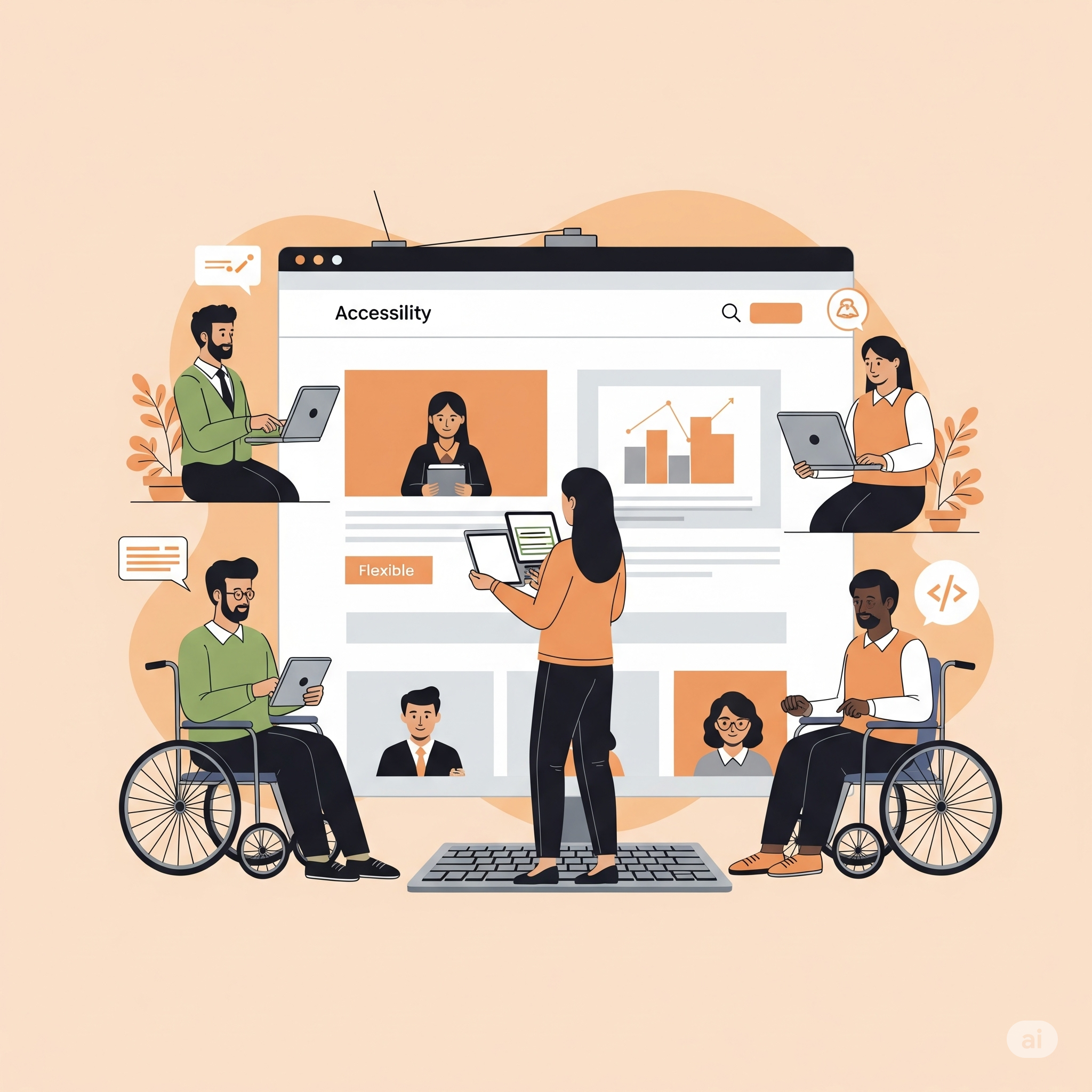In today’s digital-first world, a website is often the primary touchpoint between an organization and its audience. From e-commerce stores and news portals to government services and educational platforms, the web is an indispensable part of our daily lives. Yet, for a significant portion of the population, navigating this digital landscape can be an uphill battle due to accessibility barriers.
Web accessibility isn’t just a buzzword; it’s a fundamental principle that ensures websites are usable by everyone, regardless of their abilities or disabilities. This includes people with visual impairments, hearing loss, cognitive disabilities, motor difficulties, and even temporary limitations like a broken arm or a poor internet connection. Making web accessibility a priority isn’t just about compliance; it’s about creating an inclusive, equitable, and ultimately more successful online experience for all.
Here’s why web accessibility should be at the forefront of every website’s development and ongoing maintenance:
1. Expanding Your Audience and Market Reach
Consider the sheer numbers: According to the World Health Organization, over a billion people, or 15% of the global population, experience some form of disability. In India alone, the 2011 Census reported that 2.68 crore people (about 2.2% of the total population) had a disability, and these numbers are likely higher now. Ignoring web accessibility means effectively shutting out a massive segment of potential users, customers, and readers.
By making your website accessible, you open your doors to this untapped market. This translates to more visitors, increased engagement, higher conversion rates, and ultimately, a larger and more loyal customer base.
2. Enhancing User Experience for Everyone
The principles of web accessibility often lead to a better user experience for all users, not just those with disabilities. Clear navigation, well-structured content, legible fonts, and responsive design—all elements crucial for accessibility—benefit everyone.
For example:
- Keyboard navigation: Essential for users who cannot use a mouse, but also convenient for power users.
- Captions for videos: Critical for individuals with hearing impairments, but also useful for people watching in noisy environments or those who prefer to read.
- Good color contrast: Vital for users with visual impairments, but also improves readability for everyone in bright sunlight or on older screens.
An accessible website is inherently a more user-friendly website.
3. Boosting Your SEO and Search Rankings
Search engines like Google prioritize user experience. Many accessibility best practices align perfectly with good Search Engine Optimization (SEO) techniques. For instance:
- Semantic HTML: Using proper HTML tags (e.g.,
<header>,<nav>,<h1>for headings) helps screen readers understand the page structure and also helps search engine crawlers. - Image alt text: Provides descriptions for images, crucial for visually impaired users, and also gives search engines context about your images, improving image search rankings.
- Clear and concise content: Benefits users with cognitive disabilities and also improves readability, which search engines favor.
- Website performance: Accessible websites are often more streamlined and load faster, a significant ranking factor for SEO.
By making your website accessible, you’re also making it more discoverable.
4. Mitigating Legal Risks and Ensuring Compliance
Web accessibility is increasingly becoming a legal requirement in many parts of the world. Countries like the United States (Americans with Disabilities Act – ADA), Canada, the European Union (European Accessibility Act), and even India (under the Rights of Persons with Disabilities Act, 2016, which mandates accessible information and communication technologies) have regulations in place to ensure digital inclusivity.
Failing to comply with these regulations can lead to costly lawsuits, significant fines, and reputational damage. Proactively addressing web accessibility protects your organization from potential legal battles and demonstrates your commitment to social responsibility.
5. Upholding Ethical Responsibility and Corporate Social Responsibility (CSR)
Beyond legal obligations, there’s a strong ethical imperative to ensure your website is accessible. Everyone deserves equal access to information, services, and opportunities online. By prioritizing accessibility, you demonstrate your organization’s commitment to inclusivity, diversity, and social equity.
This commitment can significantly enhance your brand image, attract socially conscious customers and employees, and build trust with your audience. It reflects a modern, forward-thinking organization that values all members of society.
6. Driving Innovation and Future-Proofing Your Website
Designing for accessibility often sparks innovative solutions that benefit everyone. The constraints of accessibility can push developers and designers to think more creatively about how information is presented and interacted with.
Furthermore, by building an accessible website, you are future-proofing it. As technology evolves (e.g., voice interfaces, virtual reality), a foundation built on accessibility principles will be more adaptable and ready for new ways of interaction.
Getting Started with Web Accessibility
Making your website accessible isn’t a one-time task; it’s an ongoing commitment. Here are some initial steps:
- Educate your team: Ensure everyone involved in your website’s development and content creation understands the importance of accessibility.
- Conduct an accessibility audit: Use tools and manual testing to identify existing barriers on your website.
- Follow WCAG guidelines: The Web Content Accessibility Guidelines (WCAG) are the internationally recognized standard for web accessibility.
- Prioritize accessible design from the outset: Integrate accessibility into your design and development workflow from the very beginning, rather than as an afterthought.
- Test with real users: Engage individuals with disabilities to test your website and provide valuable feedback.
- Regularly review and maintain: Accessibility is an ongoing process. Regularly review your website and implement updates to ensure continued compliance.
Conclusion
In an increasingly interconnected world, the internet should be a tool that empowers, not excludes. Prioritizing web accessibility is not just a matter of compliance or a niche consideration; it is a fundamental pillar of good web design, smart business strategy, and ethical responsibility. By embracing web accessibility, you create a more inclusive, user-friendly, and successful online presence that truly serves everyone.
At 7Shades Digital, we specialised in creating strategies that help businesses excel in the digital world. If you’re ready to take your website to the next level, contact us today!





